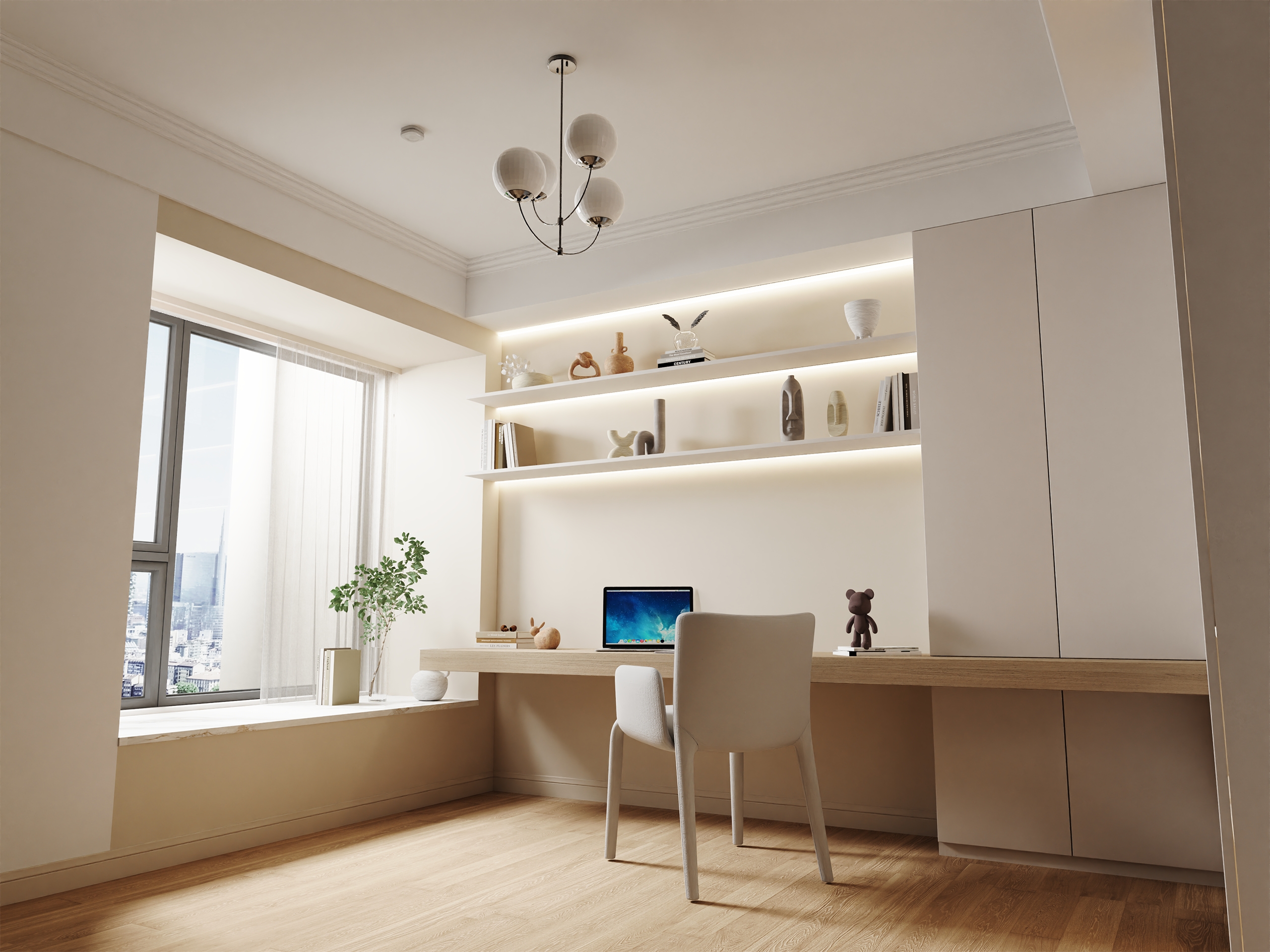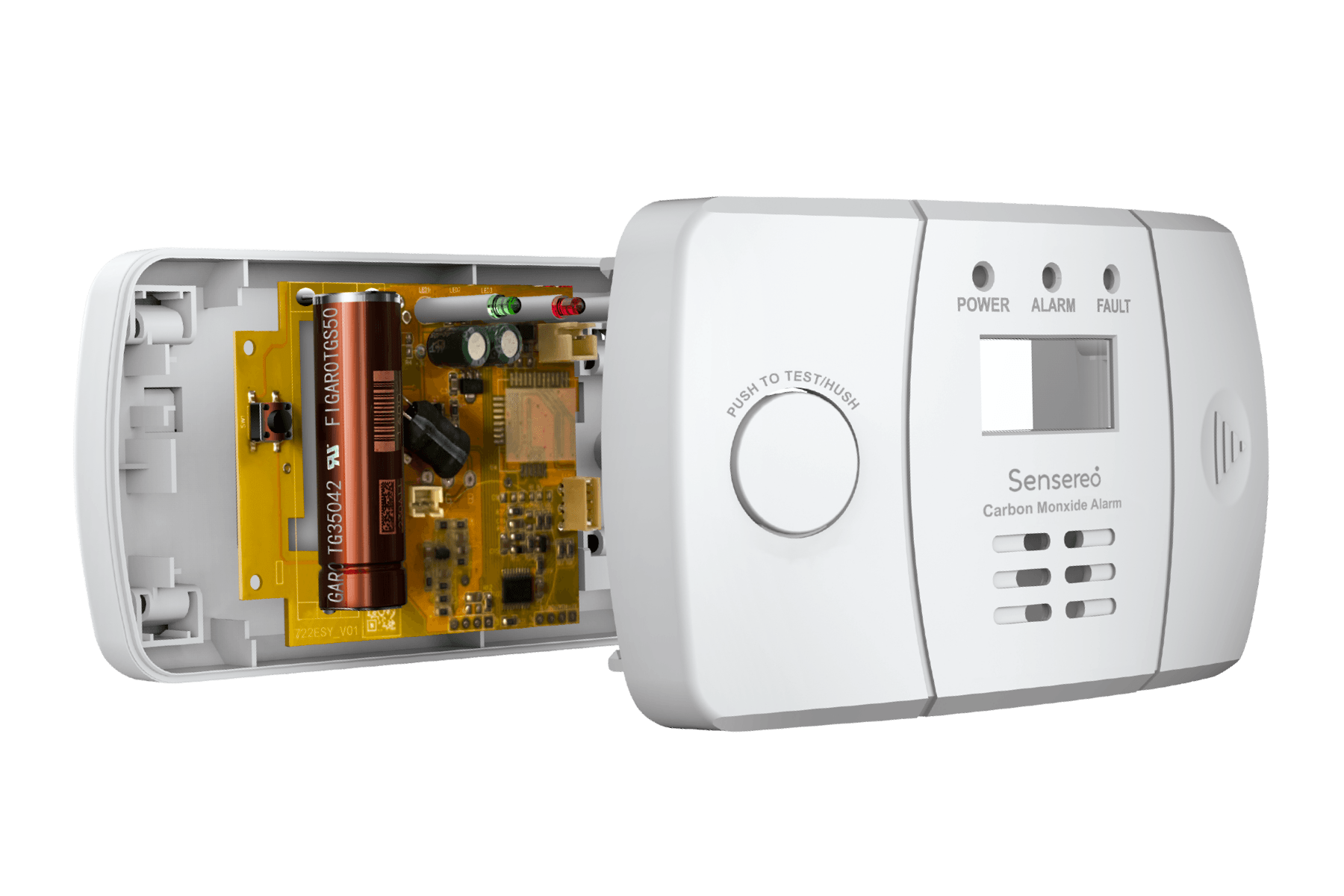Introduction: The Silent Threat Lurking in Every Home
I’ve always heard carbon monoxide (CO) called the “silent killer,” and it’s a fitting name. Invisible, odorless, and colorless. CO is produced by everyday fuel-burning appliances. Without a special device, there’s no way to know it’s there. That’s why understanding what is a CO detector and installing the best carbon monoxide detector is one of the most important steps you can take to protect your family. One great example is the Sensereo C‑1 Carbon Monoxide Detector: a reliable, battery‑operated carbon monoxide detector that works independently without Wi‑Fi or apps.
In this article we’ll take a close look at the dangers of carbon monoxide, explore how carbon monoxide detectors work, compare sensor technologies, and help you choose the best carbon monoxide detector for your home. With real-world advice on placement, maintenance, and models like the battery-operated Sensereo C‑1, this guide will give you the clarity and confidence to keep your home and family safe.
The Silent Killer: Understanding Carbon Monoxide Dangers
So, what exactly is carbon monoxide? It’s a toxic gas that’s created when fuels like natural gas, propane, oil, wood, and coal don’t burn up completely. Because it can build up quietly in enclosed spaces like our homes, it poses a huge threat that really drives home the need for being vigilant and having the right detectors in place.

What Makes Carbon Monoxide So Dangerous?
When we breathe CO in, it essentially hijacks our blood, binding with the hemoglobin that’s supposed to carry oxygen. This starves our vital organs, especially the brain and heart, of the oxygen they need to work. The results can be devastating, ranging from serious health problems and permanent brain damage to, tragically, death. Because we can’t see, smell, or taste it, CO poisoning is particularly sneaky without a detector on guard.
Common Household Sources of CO Leaks
You might be surprised by how many common things in our homes can produce CO if they aren’t working perfectly or aren’t vented properly. These include:
- Furnaces and water heaters
- Gas stoves and clothes dryers
- Fireplaces and wood-burning stoves
- Portable generators (a huge one to watch out for)
- Charcoal grills used indoors or in a garage
- Vehicle exhaust, especially if a car is left running in an attached garage
When you look at that list, it becomes pretty clear that a reliable carbon monoxide detector isn’t just a nice-to-have, it’s an absolute necessity.
Recognizing the Symptoms of CO Poisoning
The symptoms of CO poisoning are often tricky because they can easily be mistaken for common illnesses like the flu, which makes it tough to diagnose without a doctor’s help. Some of the early warning signs you might feel are:
- Headaches
- Dizziness and nausea
- Feeling tired and weak
- Shortness of breath
As the exposure gets worse, the symptoms can escalate to confusion, vomiting, losing muscle control, and eventually, passing out and even death. Honestly, trying to rely on spotting these symptoms is a really risky game as a result being proactive with a CO detector is the only truly safe way to go.
How Carbon Monoxide Detectors Save Lives
Carbon monoxide detectors are just brilliant pieces of engineering. They’re designed specifically to sense CO in the air and blast an alarm to alert everyone. These devices are that critical early warning system that gives you those precious moments to get out and can literally save your life. I like to think of them as my home’s invisible guardians, and the peace of mind they offer is priceless. It’s pretty sobering when you see that the Centers for Disease Control and Prevention (CDC) reports hundreds of people in the U.S. die every year from unintentional CO poisoning that isn’t fire-related. It just underscores how vital these detectors really are.
Understanding CO Detector Technology
So how do these little gadgets actually work? At its core, every CO detector has a sophisticated sensor that picks up on tiny changes in monoxide levels. When the CO concentration hits a specific, dangerous point, that sensor trips the alarm, giving you that crucial heads-up. Even the most basic models give you this immediate alert, which shows why just understanding what is a CO detector is can be a lifesaver.
Comparing Different Sensor Types
Modern CO detectors you’ll find today generally use one of two main types of sensor technology:
- Electrochemical Sensors:These are the most common and, frankly, the most accurate. They use a neat little chemical reaction to measure the exact amount of CO in the air. Organizations like Underwriters Laboratories (UL) put detectors through tough testing, and these electrochemical sensors are the heart of many of the devices they certify.
- Semiconductor Sensors:You might find these in some older or cheaper models. The thing with these is they tend to react to a wider range of gases and are usually not as precise as the electrochemical kind, which makes them less ideal if you want dedicated CO detection.
For my money, and what all the safety experts will tell you, investing in a detector with an electrochemical sensor is the way to go. It’s a key feature I always look for in the best carbon monoxide detector models out there. Sensereo’s C-1 carbon monoxide detector is a good example.
The Importance of Alarm Systems
When the detector senses high CO levels, its alarm system kicks into gear. Today’s detectors have loud audible alarms, and many also have flashing lights to get your attention. The really advanced smart home models can even ping your phone with an alert or notify emergency services. How loud and clear that alarm is can make all the difference. And for round-the-clock protection, especially if the power goes out, a battery-operated carbon monoxide detector is an excellent choice.
Choosing the Right CO Detector for Your Home
Okay, so you’re convinced you need one. But picking the right CO detector and putting it in the right spot is everything. It’s not just about having a detector, it’s about having the right one in the best possible location.
Selecting the Best CO Detector for Your Home
When you’re looking for the best CO detectors, here are a few key features I’d suggest you think about:
Power Source: You’ve got options: battery-operated, plug-in models that have a battery backup, or hardwired ones. A battery-operated carbon monoxide detector is great because it keeps working even if the power fails, while hardwired units hook right into your home’s electrical system for a seamless setup.
- Digital Display:A lot of models now come with a digital screen that shows you the current CO level, which I find really useful for keeping an eye on things.
- Alarm Features:Look for a loud alarm (at least 85 decibels at 10 feet) and clear voice alerts. You want to be sure it can wake up everyone in the house.
- Interconnectivity:Some detectors can be linked together, which is a fantastic feature. If one goes off, they all go off. This is especially great for larger or multi-story homes.
- Lifespan:This is a big one. All CO detectors have a limited life, usually around 5-7 years, because their sensors wear out. After that, you have to replace them.
- Certification:Always, always make sure the detector is certified by a recognized safety group like UL (Underwriters Laboratories). You want to see that it meets safety standards like UL 2034.
Getting a handle on these features will really empower you to figure out what is a CO detector that will work best for your specific situation.
If you want simple, reliable protection, the Sensereo C‑1 Carbon Monoxide Detector is an excellent option just mount it and let it do its job. The following is the key feature of it.
- High-precision Figaro TGS‑5042 electrochemical sensor
- Digital LCD display showing real-time CO ppm level
- Multi-color LED indicators for power, alarm, and fault
- 10‑year battery life—no wiring, boxes, or hubs

Optimal Placement for Maximum Protection
Where you put your CO detector is just as important as which one you buy. Here are the key guidelines I always follow:
- On Every Level:You need at least one detector on each level of your home, and that includes the basement and in or near an attached garage.
- Near Sleeping Areas:It’s super important to place detectors outside each bedroom or even inside them. You need to be sure the alarm will wake you from a deep sleep.
- Near Potential Sources:While it’s smart to be mindful of your appliances, don’t put detectors right next to them. That can actually cause false alarms or mess with the readings.
- Avoid Dead Air Spaces:Keep them out of corners, from behind curtains, out of direct sunlight, and away from vents or windows. Air doesn’t move well in these spots, which can affect how well the detector works.
My Pro Tip: To be absolutely sure, always check the manufacturer’s instructions that come with your detector. They’ll have specific recommendations for height and location.
Installation Tips and Common Mistakes
For most battery-operated carbon monoxide detector and plug-in models, installation is usually pretty simple. The number one rule is to always follow the manufacturer’s instructions to the letter. Some common slip-ups I see people make are:
- Installing too close to fuel-burning appliances:You have to give it some space to avoid false alarms.
- Placing in drafty or humid areas:This can throw off the sensor’s accuracy.
- Forgetting about multiple detectors:One detector is almost never enough to cover a whole house, especially one with multiple floors or a sprawling layout.
Maintaining Your CO Detector for Reliable Protection
Even the absolute best carbon monoxide detector needs a little regular TLC to make sure it’s working at its best. A well-maintained detector is truly your most reliable defense against that silent threat of CO poisoning.
Testing and Battery Maintenance
This is so important: you have to test them regularly. Most detectors have a “test” button that lets you check if the alarm is working. I make it a habit to test mine at least once a month. If you have a battery-operated carbon monoxide detector, you should replace the batteries at least once a year. A great little trick is to do it when you change your clocks for daylight saving time. Plus, most detectors will give you a “chirp” sound when the battery is low, which is your cue to swap it out.
Knowing When to Replace Your Detector
This is a big one that a lot of people overlook: carbon monoxide detectors don’t last forever. Their internal sensors break down over time, so their effective lifespan is usually about 5-7 years for the electrochemical models. You should always check for a “replace by” date printed on your unit. Ignoring this date could leave your home unprotected. I’d recommend putting a reminder on your calendar. It’s a critical part of knowing what is a CO detector and keeping it working reliably.
Creating a Complete Home Safety Strategy
A CO detector is a key player, but it’s really just one piece of a full home safety plan. Make sure you also have:
- Working smoke detectors on every level and inside all bedrooms.
- A fire escape plan that every single person in your household knows and has practiced.
- Regular professional check-ups for all your fuel-burning appliances (your furnace, water heater, etc.).
- A family chat to educate everyone about the dangers of CO, what the alarm sounds like, and what to do if it ever goes off.
Taking this kind of layered, proactive approach is what gives you the ultimate protection for your family.
Frequently Asked Questions (FAQs)
Q1: Can my CO detector detect a natural gas leak?
A1: That’s a great question, but no. A carbon monoxide detector is designed only to sniff out CO, not natural gas (methane) or propane. For those, you’d need a separate detector made specifically for natural gas or combustible gases.
Q2: What does the “chirping” sound from my CO detector mean?
A2: If you hear that annoying, repeating chirp, it’s usually a signal that the battery is low. Sometimes, though, it can mean there’s an error or that the whole unit is getting close to its end-of-life. It’s always a good idea to check the manual for your specific model to see what the different chirp patterns mean.
Here is the blog explains the meaning of different beeping sounds: https://sensereo.com/community/understanding-carbon-monoxide-detector-beeps-what-do-they-mean/
Q3: How high on the wall should I install a CO detector?
A3: You know, this is a common question. Because CO tends to mix pretty evenly with the air, you can generally install a detector at any height on a wall or even on the ceiling. However, I always say to check the manufacturer’s instructions. They’ll give you the most accurate placement advice for your specific model.
To wrap it all up, understanding what is a CO detector and taking the step to install the best carbon monoxide detector for your home isn’t just a suggestion. It’s truly something you can’t afford to skip. Whether you decide on a hardwired unit, a dependable battery-operated carbon monoxide detector, or a fancy smart home system, these devices are absolutely essential for protecting the people you love from the silent and deadly threat of carbon monoxide. Don’t put it off. Investing in this for your home and family is an investment in real tranquility and protection.
Ready to make your home safer? Go explore the certified carbon monoxide detectors out there to complete your home protection plan.
Reference:
https://www.cdc.gov/environmental-health-tracking/php/data-research/carbon-monoxide-poisoning.html



